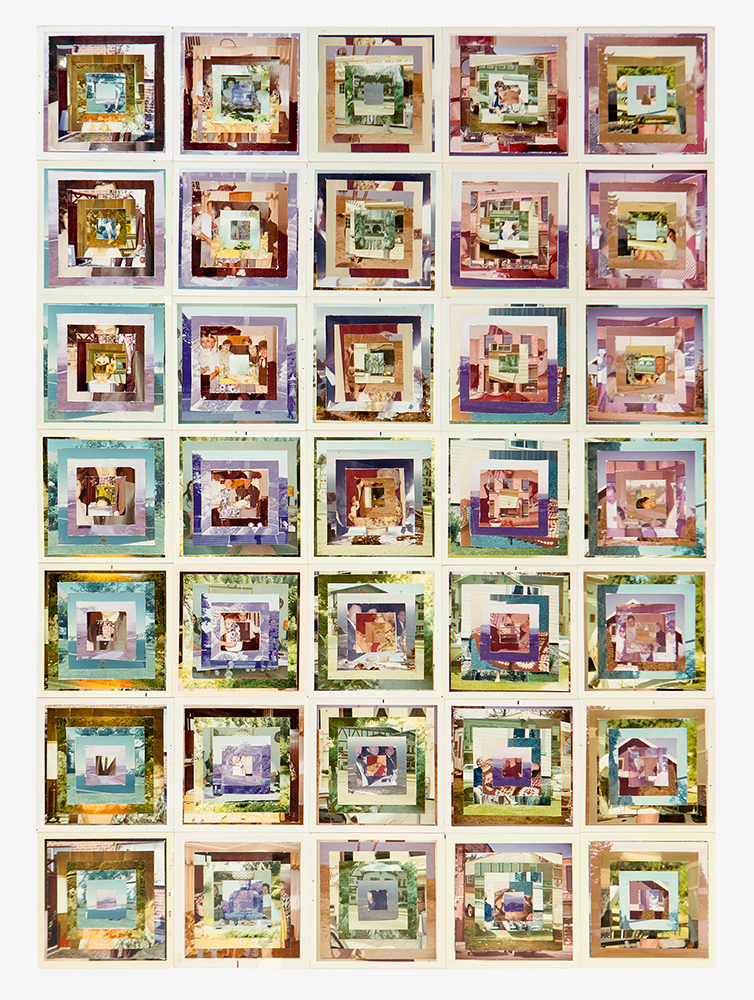
Picture in Picture, 2019. Found photographs on paper. 30 x 22 inches. © Joe Rudko. Courtesy of Von Lintel Gallery.
Introduction
I first saw Joe Rudko’s work this past January at the 2019 PhotoLA Fair where he was exhibiting with PDX Contemporary Art. I was very taken with the playfulness of the work and his intuitive response to pattern, light, form, and color. Having followed his work for the better part of a year, I’m consistently impressed with Rudko’s ability to utilize vernacular imagery in exciting, experimental ways. His work is anything but predictable, yet he calls upon familiar visual spaces in ways that offer a sense of stability. His capacity to find practical and emotional value in the process of art-making keeps him invested in finding novel ways to articulate his ideas. It was my pleasure to speak with Joe for this conversation about his delightful and intricate work.
__________________
Bree Lamb: What seems evident to me in your work, and has been reinforced in our conversations, is the sheer joy that you have in the experience of making work. Can you tell us a bit about your process and set the scene for us? Messy or clean? Loud music or quiet? Do you interact with others in a shared space or work independently in your own studio?
Joe Rudko: My studio is in an industrial part of Seattle, above a metal sorting and recycling facility. A couple of times a day I can hear an entire pallet of metal scraps fall off a forklift and shake the floor. Sometimes I joke that I’m a weird recycling facility of my own, with piles of photographs instead of metal. My friend and photographer Natalie Krick moved into the front part of my studio over the summer, and there’s about 7 or 8 other artists who share the building. My studio is generally pretty tidy, but recently I’ve enjoyed throwing unusable photo scraps onto the floor and watching the layer of pictures slowly build under my feet. I try to keep the photographs I’ve collected organized in some way, but there are so many ways to sort them and the piles, boxes, and drawers are always changing. I’ve got plastic baggies full of eyes, camera flashes going off in mirrors, horizon lines, and a million other things I’ve started collecting.
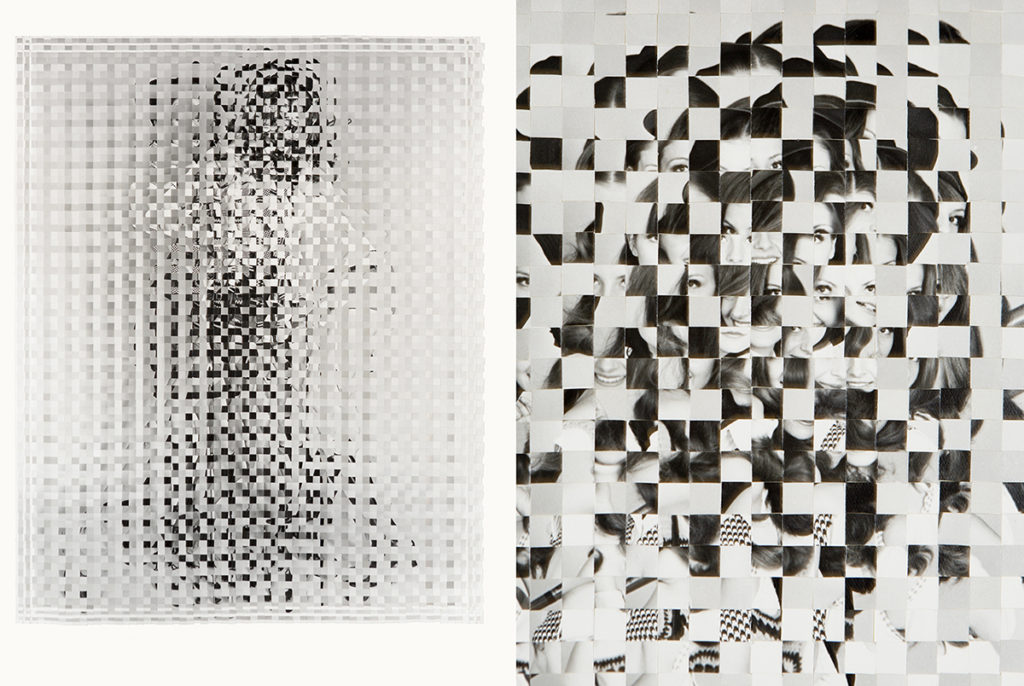
Shapeshifter, 2019. Found photographs on paper. 50 x 38 inches. (right: detail) © Joe Rudko. Courtesy of Von Lintel Gallery.
BL: What connections, if any, do you have between your creative process and the final compositions that you make?
JR: When I cut pictures, sometimes for hours at a time, the repetition makes a meditative space where I connect with the angle of the blade, the speed of the cut, the positioning of my body, and my breath. Systematically cutting and arranging the pieces into a pattern slowly produces a larger singular image- similar to being in the darkroom and watching the image appear in the developer. I like collage because it provides a stage for different images to coexist on an equal plane. Pieces like Shapeshifter appear like a single blurry figure when viewed from a distance, but up close you can inspect the clarity of each individual fragment. The saying “ the whole is greater than the sum of its parts” can easily apply to collage, and collage also allows you to see that the parts themselves are whole.
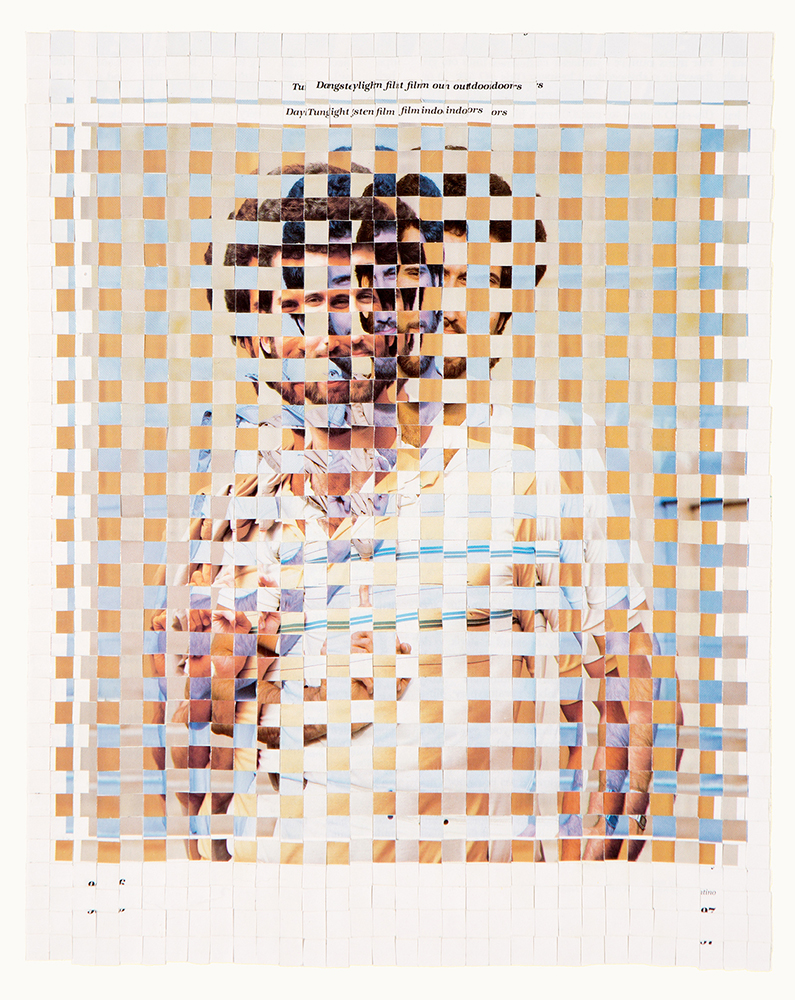
Casual Man, 2019. Found bookplate on paper. 15 x 11 inches. © Joe Rudko. Courtesy of Von Lintel Gallery.
BL: Do you start with a particular aesthetic in mind and make the work to accommodate, or do you begin to find connections between color, tone, or content and allow the shape to reveal itself?
JR: The aesthetic is largely the result of the found materials. There’s a yellowing, tinting, and wear to the images that connect them to the past. They come preloaded with a sense of meaning and history. I’ll make small drawings and notes to myself throughout the day and they’ll direct the way I deconstruct and piece together the photographs later in the studio.
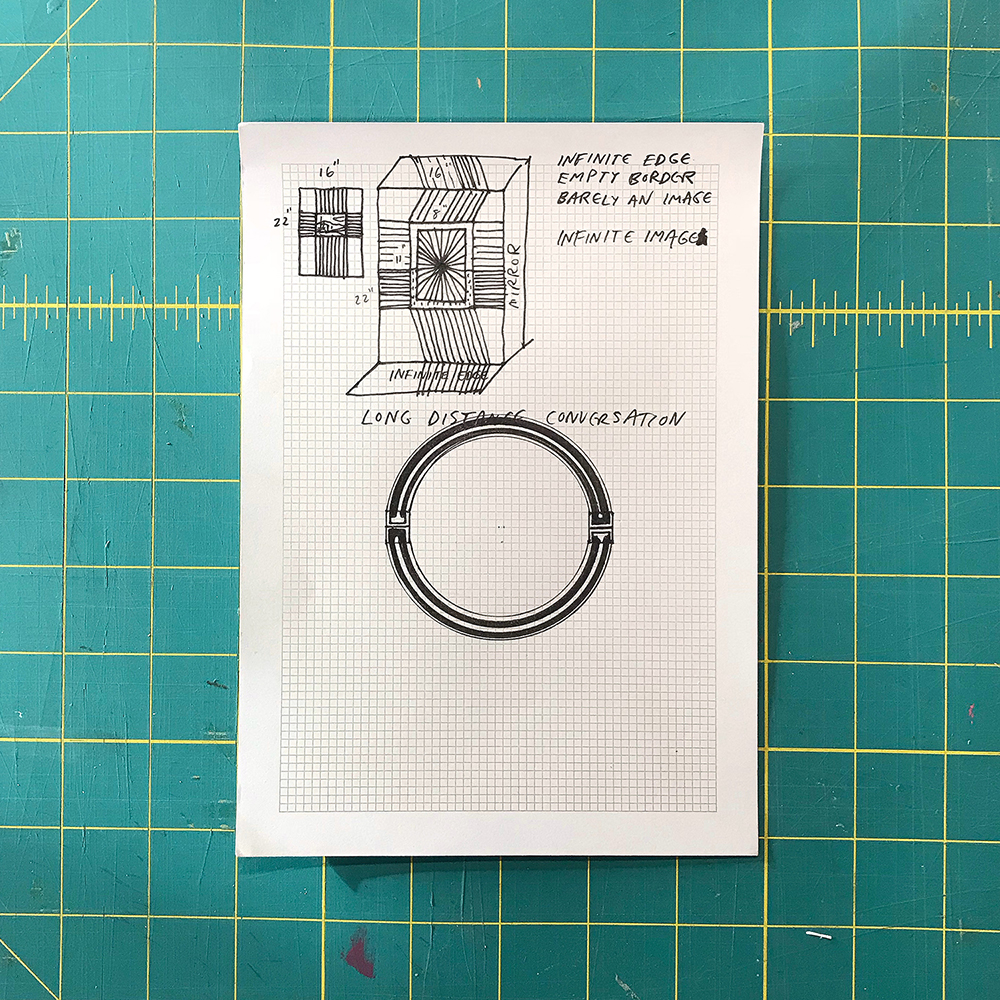
Sketchbook page, 2018. 15 x 11 inches. © Joe Rudko
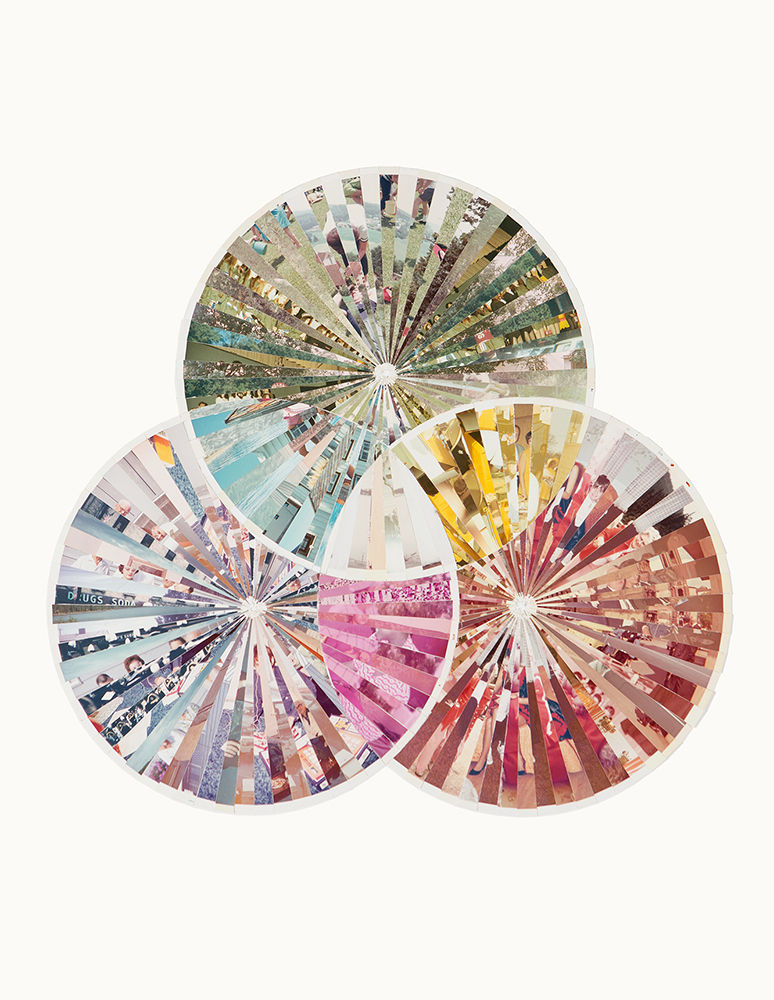
RGB Venn Diagram, 2019. Found photographs on paper. 30 x 22 inches. © Joe Rudko. Courtesy of Von Lintel Gallery.
BL: Was there a specific moment when you realized that vernacular images were going to form the basis for much of your creative output?
JR: When I was a teenager, I remember visiting a junk shop in the Ballard neighborhood in Seattle and coming across a pile of photographs. I bought a b/w image of an elderly woman because it reminded me of my grandmother who I didn’t know very well, and I thought maybe, possibly, it was a photo of her. I carried around the image for a couple of years before it occurred to me that the picture was probably taken in the 1940s or ’50s and my grandmother would have been much younger than the woman in the photo. It was an exciting realization that a small found photograph could inspire a very personal reflection.
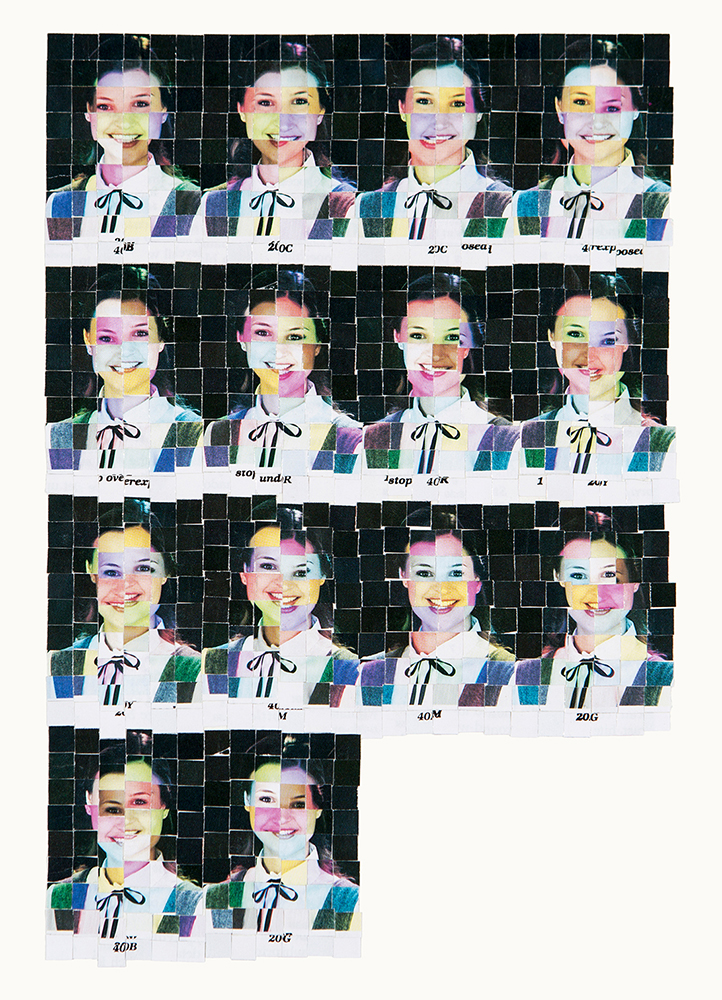
Color Profile, 2019. Found bookplate on paper. 15 x 11 inches. © Joe Rudko. Courtesy of Von Lintel Gallery.
BL: I see your artistic role encompassing aspects of an anthropologist and a curator. Your work uses, in some cases, hundreds of pieces of individual found photographs, each with their own histories and stories, yet oftentimes your final compositions are abstract and much of the information which could divulge time and place is removed or absorbed into a larger visual space.
With that in mind, you said this lovely thing when we spoke, about trying to detach in some ways from the original content of the found photograph; that “it can be freeing to give up the attempt to know and lean into what you don’t know.” I’m curious to know if this philosophy helps to keep things fresh and keep you searching for modes of expression.
JR: One thing that fascinates me about photography is that it appears to reflect reality, but doesn’t stand up under scrutiny. Hockney has a quote about how great photography is, “if you don’t mind the perspective of a paralyzed cyclops.” Photography presents many more unknowables than knowables, and there’s an instinct to respond by labeling, describing, and filling in the blanks. Rather than inserting my own narrative or projecting my own experience, I want to keep the photographs as open as possible and celebrate their ability to be anything for anyone for any reason.
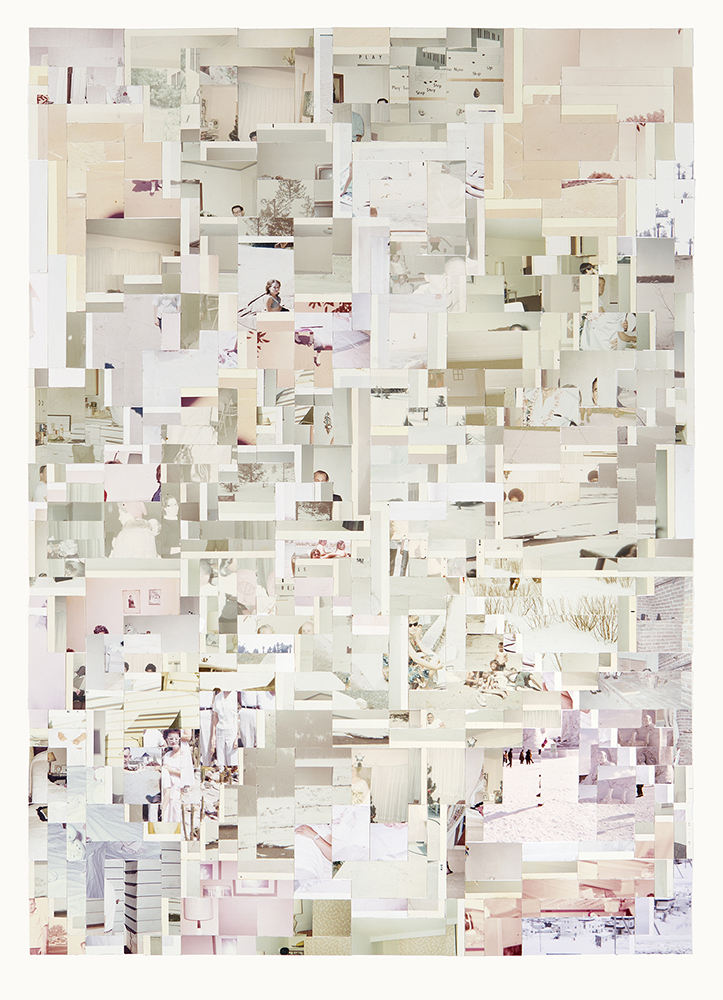
White Web, 2019. Found photographs on paper. 30 x 22 inches. © Joe Rudko. Courtesy of Von Lintel Gallery.
BL: In addition to your strictly image-based work, I’m interested in the use of text in your posters. They have this uplifting spirit but also exist in a semi-camouflaged visual space – could you tell us a bit more about those?
JR: Those were made during a period of depression in 2016-2017. I was hospitalized following a manic episode and diagnosed as bi-polar for the first time. I was in a low place, and would show up to my studio with the goal of doing anything. I started tearing up pictures into text collages with optimistic phrases like “HALF FULL”, “GREENER”, and “THE WEIRD FEELINGS INSIDE OF ME”. The camouflaging of the text was a reference to the Ishihara Test used to test color blindness. Similarly, depression can alter your perceptions, making feelings of joy or optimism, impossible to see. It wasn’t until months later when I got healthier and the fog had lifted that I began to understand what I was doing and could see them as motivational posters for my depressed self- my version of the “Hang in There” cat.
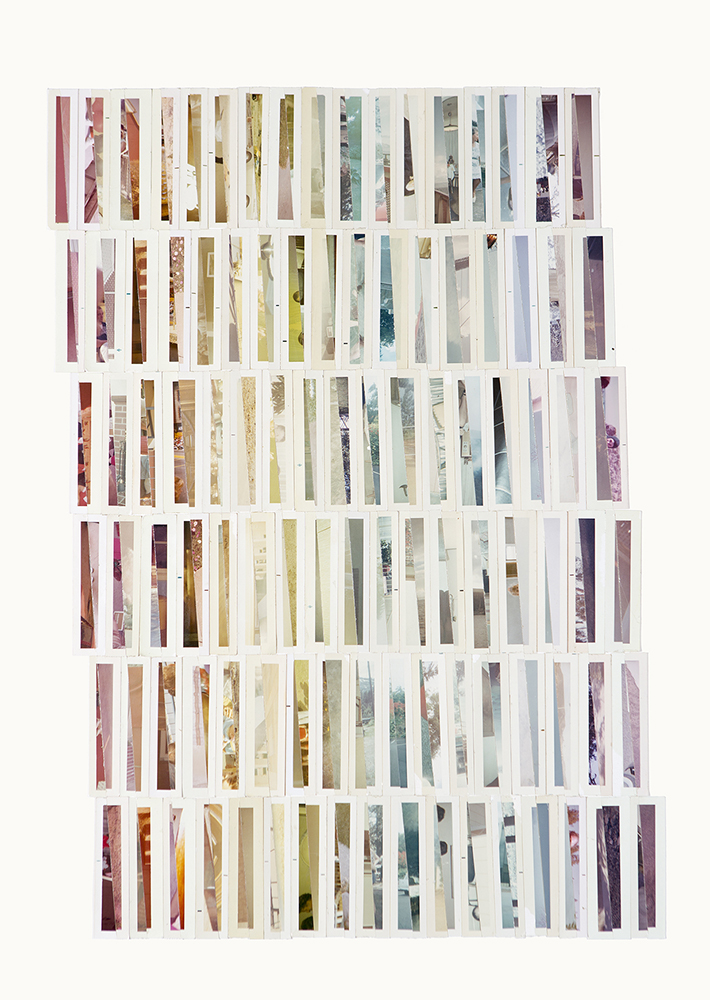
Rainbow Lean, 2019. Found photographs on paper. 30 x 22 niches. © Joe Rudko. Courtesy of Von Lintel Gallery.
BL: Do you have any particular experiences or responses that you’d like to evoke in the audience?
JR: Hmmm, I don’t think so. If anything, I’d like to communicate that I don’t know anything.
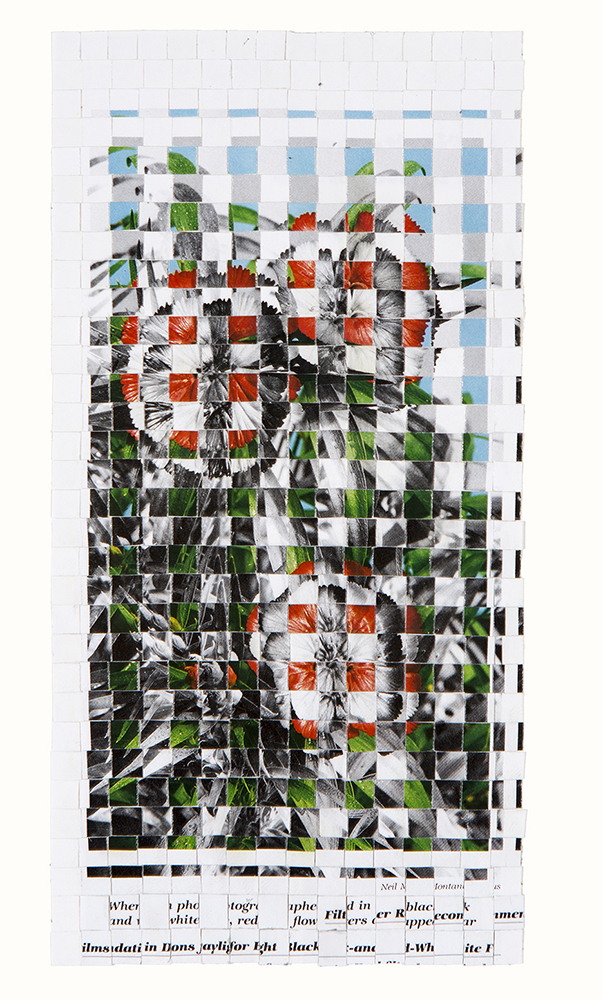
Flower Filter, 2019. Found bookplate on paper. 15 x 11 inches. © Joe Rudko. Courtesy of Von Lintel Gallery.
BL: There seems to be a drive to connect through the work, and the anonymity within the final compositions provides an opening for viewers to insert themselves into potential narrative spaces. I’m curious about your thoughts on this aspect of the work.
JR: I love how many meanings a static image can have and how the work itself can have a variety of interpretations. When I have a show, I often include a piece I feel uncertain or uneasy about, and that piece will inevitably evoke a specific connection or emotion for someone, they’ll tell me about it, and then I have a new way of understanding it. I think because I’m operating with personal snapshots, a form of storytelling, they inspire viewers to share their own stories.
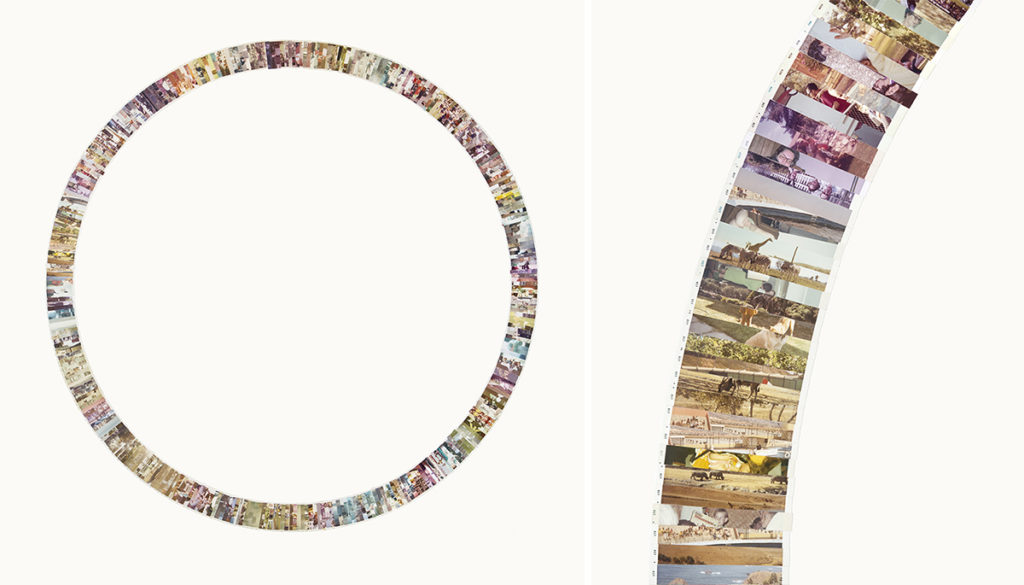
Calendar, 2018. Found photographs on paper. 69 x 66 inches. (right: detail) Made from 365 unique and timestamped photographs- one for each day of the year. © Joe Rudko. Courtesy of Greg Kucera Gallery.
BL: How do you find your interests and aesthetic developing and changing over time? What remains the same?
JR: When I was 8 or 9, I was given a manual focus SLR and I was amazed at how clearly I could see the branches of trees and individual blades of grass. About a year later I found out that I needed glasses. It made me realize that everyone was seeing something different yet somehow still agreeing more or less on this thing we call reality. Photography’s connection with vision, reality, and collective perception are tasty morsels I continue to explore, and I enjoy finding new ways of understanding them. Now I find myself looking at a lot of painting- a form with a strong connection to photography, but with its own beautiful limitations.
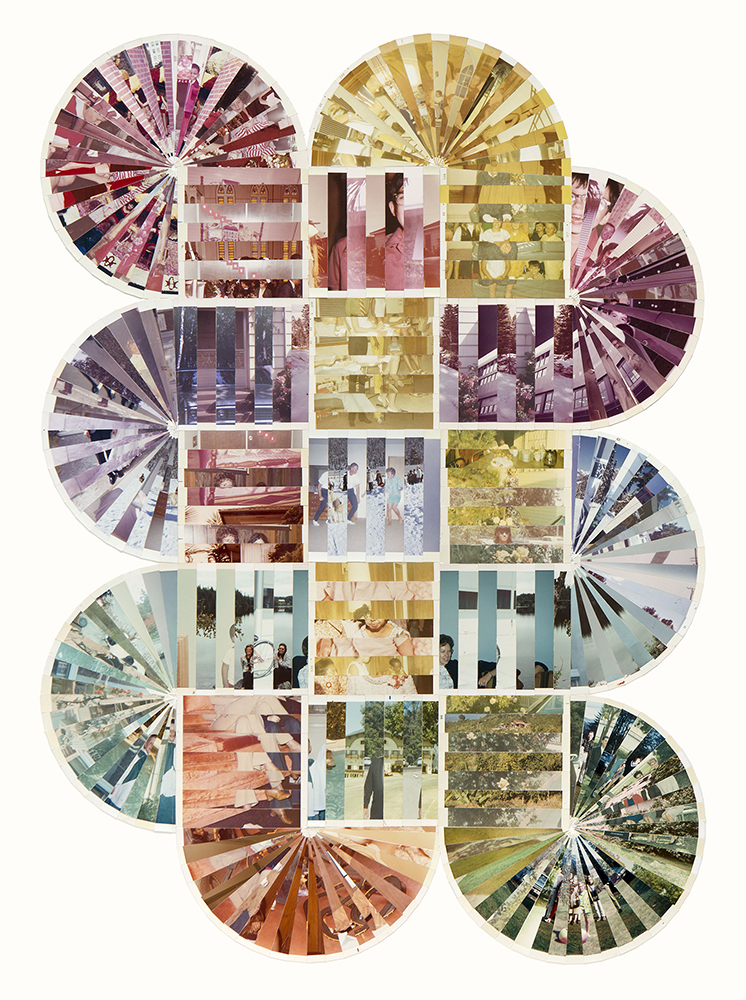
Tangled Loop, 2019. Found photographs on paper. 30 x 22 inches. © Joe Rudko. Courtesy of Von Lintel Gallery.
BL: Your work is very physical, and the effort and craftsmanship is evident. Do you find that working in unique pieces, as opposed to the traditional approach of editions in photography, is important in connection with the content of the work?
JR: Yeah. When I was in college I was shooting my own photographs, printing editions, scanning negatives, and posting on sites like Flickr and Tumblr. I saw Erik Kessel’s ‘24hrs of Flickr’ where a gallery was filled with prints from a single day of Flickr uploads. There were so many that children could literally swim in the piles. This reflected a futility I felt about my own images being lost in the shuffle of the millions shared online. On the side, I was collecting antique snapshots, and I started incorporating them into drawings to express ideas about images rather than making my own. I enjoyed the feeling that I was retiring them from circulation and making a small dent in the pile of forgotten images.

Web, 2019. Found photographs on paper. 30 x 22 inches. © Joe Rudko. Courtesy of Von Lintel Gallery.
BL: The work shines on a digital platform, and I highly encourage people to experience it in person, when possible, as each piece is rich, layered, and dynamic. Could you please share any opportunities where people can catch your work in person?
JR: Yes, I have an exhibition called Tiny Mirrors up now at Von Lintel Gallery October 23 – Dec 21. It’s my first solo show in Los Angeles. I’ll also have work with Von Lintel at Paris Photo in November.
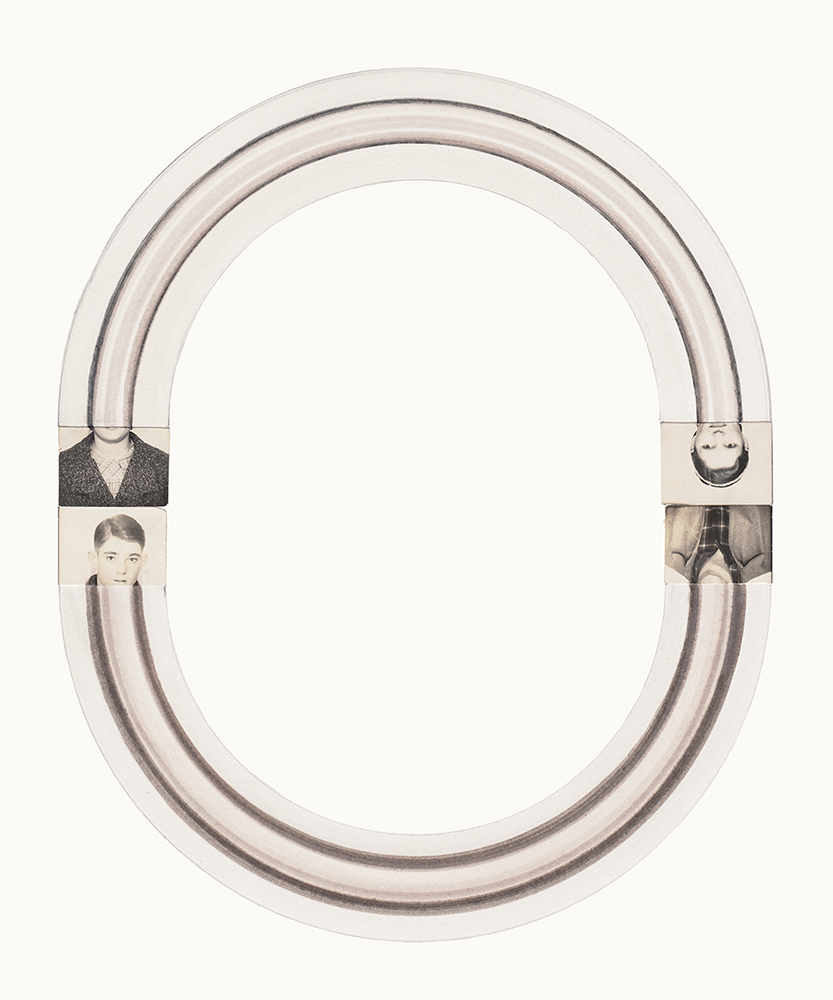
Long Distance, 2018. Found photographs and spotting pen on paper. 15 x 11 inches. © Joe Rudko. Courtesy of Greg Kucera Gallery.
BL: Thank you, Joe. I know you’re a busy guy, I appreciate you taking the time to share insight into your work and processes.
JR: Thank you
______________________
Bios
Joe Rudko is a graduate of Western Washington University and has shown broadly in both solo and group exhibitions throughout the Northwest including exhibitions at the Portland Art Museum, PDX Contemporary Art and Greg Kucera Gallery, as well as Von Lintel Gallery (Los Angeles, CA) and Davidson Gallery (New York, NY). He has been the recipient of the Future List Award and two Art Walk Awards from City Arts Magazine as well as the Vermont Studio Center Fellowship Award and the Facebook Artist in Residence program. His work is featured on the cover of indie rock band Death Cab for Cutie’s album Kintsugi and is included in the permanent collections of F5, the City of Seattle, and the Portland Art Museum. His work has been published in Artforum, Art in America, New American Paintings, Humble Art Foundation, Fukt Magazine for Contemporary Drawing, The Stranger, and The Seattle Times. Rudko lives and works in Seattle, WA.
Bree Lamb is an artist, educator, and editor based in New Mexico. She is an Assistant Professor of Photography at New Mexico State University and holds an MFA from the University of New Mexico and a BFA from Pennsylvania State University. She is a Beaumont Newhall/Van Deren Coke Fellow and is represented by Gallery19 in Chicago. Her work is held in permanent collections at the Colorado Photographic Arts Center, the University of Iowa, Arizona State University and the Southwest Center for Research. Recent artist lectures include Colorado College, The University of Colorado at Colorado Springs, The Society for Photographic Education’s West/Southwest Conference and the Las Cruces Museum of Art. For the last five years, Lamb has been the Managing Editor for Fraction Magazine, an online venue for contemporary photography. She has reviewed portfolios at national and international events including Review Santa Fe, Medium Festival of Photography, Mt. Rokko Photography Festival, and Photolucida.
______________________
Stay connected with In the In-Between
_____________________________
Submit your work
